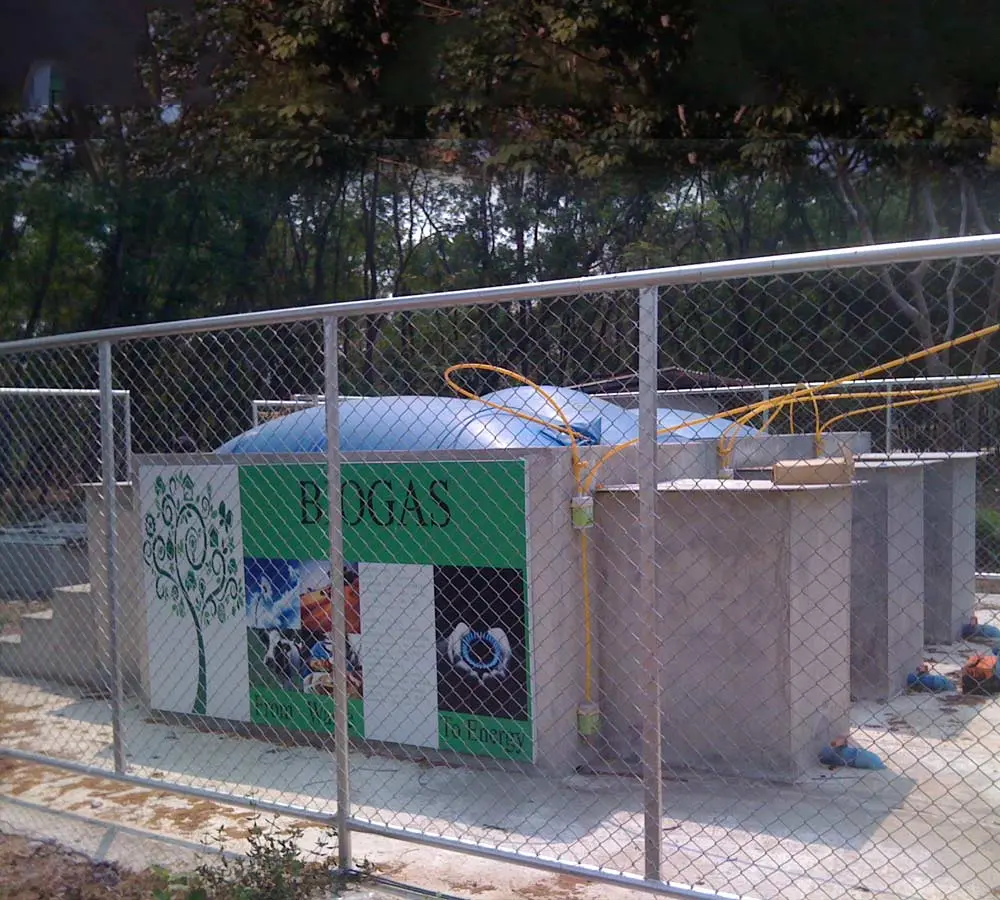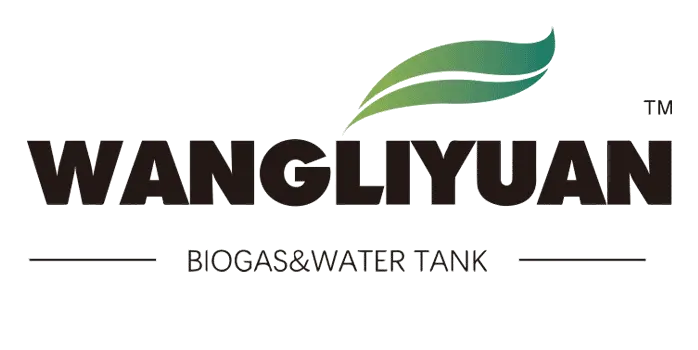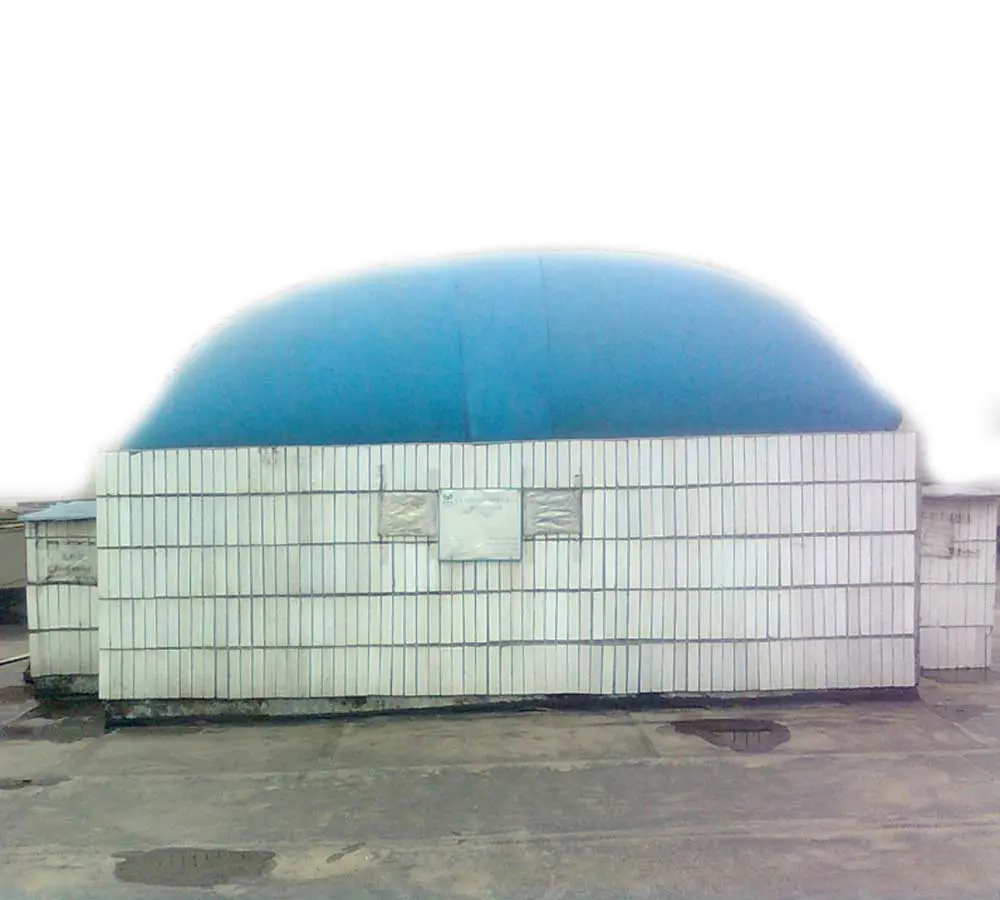Home or household biogas digester plant
Content
Section 1.Source and treatment of biogas fermentation raw materials
Section 2. Scientific Management of Biogas
Section 3. Maintenance of biogas digester
Section 4. Notes on biogas digester management
Section Source and treatment of biogas fermentation raw materials

I. Source of fermentation raw materials
Fermentation raw materials can be divided into two categories:
A:Carbon-rich organic matter: Carbon-rich organic matter, that is, raw materials with high carbon content, such as crop straw and leaves with high cellulose content, have a slow decomposition rate, a long gas production cycle, and a high gas production volume.
B:Nitrogen-rich organic matter: Nitrogen-rich organic matter, that is, raw materials with high nitrogen nutrients, such as human and animal feces, sewer sludge, etc. These raw materials decompose quickly and have a short gas production cycle.
2. Pretreatment of fermentation raw materials
There are two methods:
(i) Short chopping (or crushing)
Chop into 2-3 inch long pieces. It is convenient for feeding and discharging. It can increase the gas production by 15-20%.
(ii) Composting
There are two methods.
1. Composting outside the pool
2. Composting inside the pool
In view of the fact that composting will cause the loss of nutrients in the raw materials, the composting time should be strictly controlled and must not be too long.
Section 2 Scientific management of biogas digesters
- Loading and start-up of biogas fermentation
- Reasonable batching and comprehensive feeding
- Build a manure storage room and change the material in time
- Daily management of biogas digesters
(1) Regularly feed and discharge the biogas digester
(2) Frequently stir the fermentation materials in the biogas digester
(3) Regularly observe and adjust the pH value of the biogas fermentation liquid
(4) Regularly adjust the water volume to maintain the appropriate concentration of the fermentation materials in the biogas digester - Take insulation measures for the biogas digester
- Failure of fermentation materials and treatment methods
Fermentation raw material failure and treatment methods
| Fault manifestation | Cause | Treatment |
| A newly built biogas digester does not produce gas for a long time after adding materials or the gas cannot be ignited; the gas production is good at the beginning, but becomes worse after a while; there is no bubbling at the inlet and outlet | ① The water is too cold and the temperature is too low ② The fermentation liquid becomes sour ③ No inoculum is added ④ The fermentation raw materials added contain toxic substances that can kill biogas bacteria | The fermentation raw materials are first piled and fermented, and then heated. Add warm water heated by sunlight. Use pH test paper to measure first, then neutralize with lime water or wood ash. Add inoculants containing biogas bacteria, such as activated sludge, etc. Change the material again. |
| There is enough fermentation raw material, but the gas production is insufficient. Bubbles often appear at the discharge port. | Scum crust | Open the movable cover and stir the fermentation materials |
| After 3 months of feeding, the gas production is getting less and less | Insufficient raw materials | Add new fermentatgion mix material |
| The water column on the biogas pressure gauge is high, but the fire is insufficient | Biogas contains less methane and has a high calorific value. | Adjust the pH of the fermentation raw materials and add activated sludge containing more methanogens |
Section 3 Maintenance of biogas digesters
- Maintenance of biogas digesters
(a) Moisture maintenance
(b) Prevent empty digesters from being exposed to the sun
(c) Anti-corrosion - Common faults of biogas digesters and their treatment methods
Common faults of biogas digesters and their treatment methods
| Fault manifestation | Reason | how to slove it |
| From the biogas pressure gauge, we can see that the water column rises fast and slow. When the water column rises to a certain height, it stops rising. | 1.The amount of gas leakage is proportional to the biogas pressure. That is, when the pressure is low, the gas leakage is small, the water column on the pressure gauge rises, and when the biogas pressure rises, the gas leakage increases; when the gas leakage is equal to the gas production, it will no longer rise. There is a hole in the connection between the gas box and the fermentation room of the biogas tank. When the liquid fills the hole, there is no gas leakage; when the biogas pressure pushes the liquid down, the hole is exposed and gas leakage occurs. 2.When the gas production increases, the fermentation liquid level is level with the lower edge of the inlet and outlet, and the biogas overflows from the outlet. | 1.Check in time and make the right judgment. Open the air pipe on the top of the pool and mark the water level in the water pressure tank. If the water level drops, it means there is a water leak; if it drops little or not, it means there is an air leak. The pool must be cleaned and repaired. 2.Add fermentation raw materials and water to make the fermentation liquid level in the pool rise to the upper edge of the inlet and outlet |
| The water column on the pressure gauge is very high, but the gas is not durable or drops quickly when used, the fire is weak, and the water column returns to its original position when the switch is turned off. | 1.Too much fermentation liquid is loaded and the gas tank is reduced in size. 2. Rainwater flows into the pool during the rainy season; 3. The air duct is blocked, the gas pipe is kinked at the bend, or the stove is too far away from the biogas tank. | 1.The material should be added and discharged frequently to ensure sufficient gas tank capacity; 2.The problem can be solved by clearing the air duct, repairing the twisted parts of the pipeline or increasing the inner diameter of the air pipe and fittings. |
| Turn on the switch, the pressure gauge fluctuates, and the firepower is sometimes strong and sometimes weak | The gas pipeline is not installed in a standardized manner, and water accumulates in the pipe, resulting in poor biogas flow. | During installation, leave a 5‰ slope on the gas pipeline toward the pool body or add a condenser at the lowest point of the pipeline. |
Section 4 Precautions for biogas tank management
(I) During the fermentation of raw materials, it is strictly forbidden to directly ignite or test the gas on the gas pipe at the top of the biogas tank to avoid backfire, explosion, and personal injury.
(II) During the ignition, gas test, and feeding and discharging process, when the water level exceeds the upper edge of the feeding and discharging room, it is not easy to add water too much to avoid a sudden surge in the pressure in the tank and the tank body bursting. When discharging and feeding a large amount of material, the gas pipe should be unplugged and the movable cover should be opened at the same time to prevent excessive pressure or negative pressure from damaging the tank body.
(III) After the newly built biogas tank is loaded, it will ferment and produce gas. If you need to continue to add materials, you can only add them from the feed port or open the cover. It is strictly forbidden to enter the tank to add materials.
(IV) Children are strictly prohibited from playing with fire near the biogas tank to avoid fire or backfire in the gas pipe, causing an explosion accident in the biogas tank.




